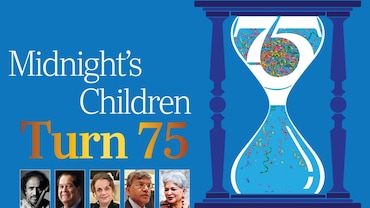- HOME
- /
- Cover Story
- /
Forces For Good: Dr Mahalaxmi Iyer
“I faced many hurdles. But once you are clear about what you want to do, I believe the universe hears you,” says Dr Mahalakshmi Iyer.
 Photo: Mandar SureSh deodhar
Photo: Mandar SureSh deodhar
A Safe Haven for Seniors
Dr Mahalaxmi Iyer, MD, 60
It all started when she was young,says Dr Mahalaxmi Iyer. She always knew she wanted to be a doctor.And once she was a doctor, she felt her work should be the kind that would leave a mark. “Otherwise everybody is born, they grow up, do their jobs,get married, have children, right? But I wanted to make a lasting impact,” Iyer says. Though her career as a healer had certainly helped others, it was the loss of her parents within a span of10 months when she was in her mid-30s, and later, of her parents-in-law,too, which brought a sinking feeling—she had not been able to do enough for them, that her time with them was cut far too short.
The idea that looking after other seniors would help ease the grief of her own losses gave Iyer a renewed focus.She sold her home, secured a massive loan and invested all her life’s savings to start Balaji Healthcare, a multi-speciality hospital and elder care home on the outskirts of Mumbai. Surrounded by unspoilt greenery near the Bhatsariver in Vasind, the 100-bed facility that opened its doors in 2011 with four patients, has since grown to accommodate 74 residents. Many of them have chronic illnesses like schizophrenia,dementia, Parkinson’s and hemiplegia, all of which require full-time,expert care that Iyer says families are unable to provide. Together with her staff, Iyer—who lives on the campus with her doctor husband—takes care of the residents’ daily healthcare needs,other specialists, like a psychiatrist and physiotherapist, visit to aid treatment.
“I faced many hurdles. But once you are clear about what you want to do,I believe the universe hears you. And there are many people who will also offer support,” Iyer says, referring to the financial troubles she faced while setting up the facility. The difficulties only eased by 2015 when well-wishers stepped up to bolster the initiative.
They don’t run like a charity, Iyerstresses, but do not charge exorbitantly either, often footing additional medical bills themselves before charging the families. The model works because “these are not children who want to shun their parents,”she adds. They are simply looking for a warm, reliable home. And such options aren’t available in plenty. As per the last census, India had about 103 million elderly citizens, a number that is expected to rise to 319 million by 2050. And yet, according to a study by the Tata Trusts, Samarth, and theUnited Nations Population Fund, the country is estimated to have only about 1,150 facilities with the capacity to house around 97,000 seniors.
Working with the elderly also means always being prepared for the unpredictable. It has taught her to be practical, she says. “You simply have to learn how to not get too attached.” And yet,a lot of her work is based on just that—feelings, good faith and a protective instinct. It could mean making room for a 92-year-old woman at a few hours’ no-tice based on frantic phone calls from a worried son-in-law who lives abroad.Or it means grieving with a family at the sudden death of an affable, chatty resident who spent his final days at the facility with his wife and 46-year-old autistic daughter.
Today, a decade after the facility was set up, Iyer takes great solace in the fact that it isn’t just providing a sense of security to residents and their families but also to the staff, most of whom are from neighbouring villages and largely female. Many of them are now able to afford two-wheelers, their own house,and better education for their children.It is, after all, these caregivers who help Iyer create a haven where fragile and vulnerable seniors can feel safe.
During COVID-19, Iyer was able to ensure all her elderly residents were protected from infection and vaccinated safely. Having put a dependable system in place, the doctor is finally making time for herself at the age of60—learning how to swim and ride a cycle, running half marathons. She admits that until now, work has been her life, often leaving little time even for her daughter as she was growing up. “ButI don’t regret it. I wanted to do it.” She wishes more people thought the same way, devoting their time and money to initiatives like hers. “Then we will have no problems. No war, nothing. It’ll be an ideal world,” she says, laughing.






